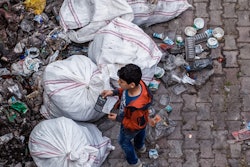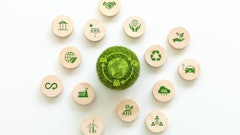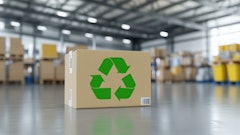
Customers return their purchases for any number of reasons. The product didn’t meet their expectations, it arrived damaged or defective or there’s nothing wrong with it at all—they simply don’t want it anymore.
When returns are requested, it’s up to individual companies to decide how to process these requests. How are most companies expected to handle returns processing in 2023? Here are three trends to watch for.
A More Circular Returns Process
A big trend this year is making returns more compliant with a circular economy model. A circular economy is one that helps restore and regenerate resources, using these available resources for as long as possible to reduce and eliminate waste.
Returns are a big piece of a circular economy model.
Will a returned item be recycled or reused? Will it be put back into inventory to be resold? Returns is part of the decision tree within the circular economy, which determines if it that item continues a usable life or ultimately ends up in a landfill or shred center.
An operation with an efficient returns process can provide additional revenue or be an expensive cost center for your company. Making sure it is set up properly can truly impact your bottom line and the sustainability of your process.
Using Return-Ready Packaging
Another trend to watch for in 2023 is the use of return-ready packaging. This is packaging that enables customers to return items in the same package that they received them. Not only is this option appealing to customers from the standpoint that they don’t have to find or buy return packaging, but it provides benefits to the business too.
One benefit is that it helps increase the likelihood that the returned item will be received in good condition. If the right packaging is used, it reduces the risk of damage during the shipping process, making the item easier to resell. It also negates the issue of having to ship the customer a new box for their returns, which costs both time and money.
Providing customers with return-ready packaging can even go a long way in showing your company’s commitment to greater sustainability. It tells consumers that you care enough about the environment to use packaging that serves more than one purpose.
Reducing Refund Requests
Some companies are also taking steps to reduce the number of customers who want to make a return, such as by utilizing technology that enables them to try a product virtually before making a purchase. This gives the customer a better idea of what the product would look like for them specifically, making it easier to decide if it is the right purchase.
An example of this is Walmart offering customers the ability to try on clothes virtually. In a news release last September, the company announced the next phase of its 'Be Your Own Model' technology which allows store customers to upload a photo of themselves so they can see how a particular piece of clothing would look on them. This is one step above previous technology which involved picking a model with a similar height and body size, then seeing how the clothes fit them.
Victoria’s Secret has implemented similar technology as well. In November 2022, NetVirta announced that it had entered into a partnership with Victoria’s Secret to provide Verifyt technology that would allow customers to do a 3D scan of their body to find “the perfect fitting bra.”
Companies can also reduce refund requests by making sure their goods arrive to customers in good shape. Your employees can assist with this by packaging the items properly, providing for more secure transport.
Returns are here to stay and enhancing the process from start to finish means your bottom line won’t suffer. A staffing company focused on output can help optimize your returns process to eliminate waste and recirculate items back into sellable inventory.



















